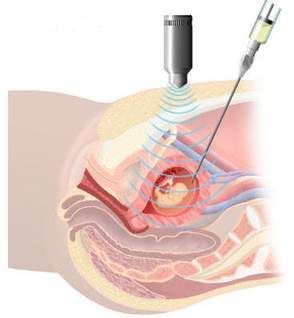Amniocentesis

Amniocentesis
Introduction
An amniocentesis is a diagnostic procedure that may be used during pregnancy. The test is used to confirm the findings of other assessments or to detect chromosomal, neural, or inherited disorders in a developing fetus. It may be taken in the last trimester to evaluate the lungs of the fetus. An amniocentesis involves obtaining and examining a sample of the amniotic fluid from within the sac surrounding the fetus. An amniocentesis is usually performed after the 16th week of pregnancy.
An amniocentesis may be recommended for pregnant women over the age of 35. Amniocentesis can detect Down’s Syndrome, which is more common in mothers age 35 and older. It may be recommended for couples that already have one child with Down’s Syndrome, Hunter’s Syndrome, or a neural tube defect, such as Spina Bifida. It may be recommended if both parents are carriers of an autosomal inherited disorder, such as Tay-Sachs disease, sickle-cell anemia, or Huntington’s chorea.
There is a slight risk of injuring the fetus or miscarriage as the result of amniocentesis. The decision to have an amniocentesis is a personal one. Some women choose not to have the procedure, and for others, the results are reassuring or helpful for future plans. There may be alternative tests to amniocentesis, and you should discuss those with your doctor.
Treatment
An amniocentesis is an outpatient procedure. An ultrasound is used to guide the procedure. Your abdomen will be cleaned with an antiseptic solution. The procedure may or may not be performed with an anesthetic. You may feel a sharp pain for a few seconds when the needle enters the amniotic sac. Your doctor will withdraw a small amount of amniotic fluid and remove the needle.
You may experience mild cramps during the first few hours following your procedure. Rarely, slight vaginal bleeding or amniotic fluid leakage occurs. Your vital signs and your fetus’s heart tones are checked before and after the procedure.
It may take a few weeks for your test to be processed. You have the option of being told the baby’s sex or not. Your doctor will discuss the results with you when they are received.